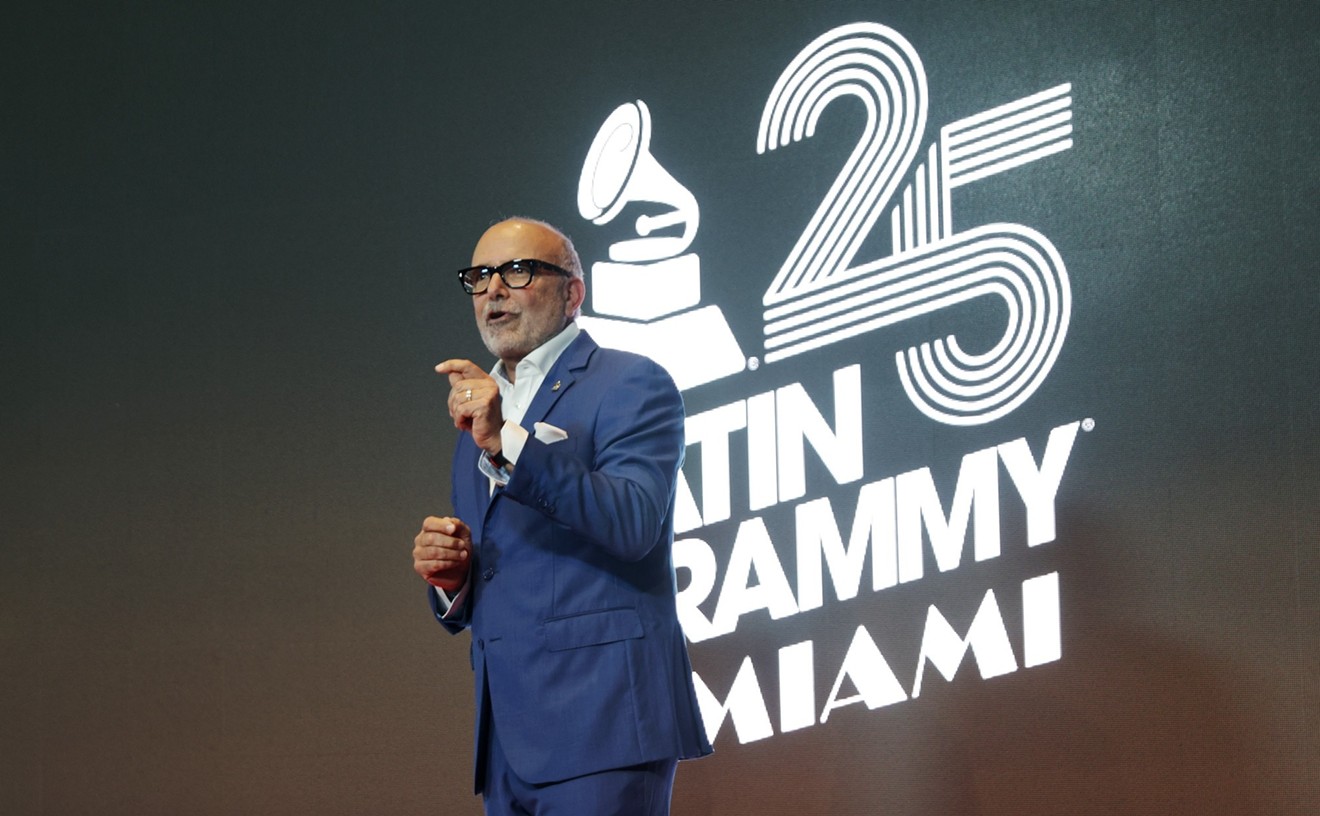Blue Man Group began as three blue, bald, monk-like musical craftsmen who approached everything with very wide eyes. An NYC-based theater show, Tubes, began it all. The idea caught on, and now the three original Blue Men, along with an extensive artistic team, cast new Blue performers to man long-running shows around the country.
"We always have a few Blue Men in the birthing canal," says Manny Igrejas, Blue Man Group's director of public relations. Gebow was part of the first litter of Las Vegas Blue Men. The show spread to include New York, Boston, Chicago, and Berlin, according to the website, which describes every Blue Man Group as "three enigmatic bald and blue characters who take the audience through a multi-sensory experience that combines theater, percussive music, art, science, and vaudeville."
But the Blue Man Group is really a large creative team that includes artistic directors, musicians, the three founding Blue Men, and scores of second- and third-generation blue and bald performing progeny who often talk about the iconic value of the mute and musical Blue Man.
"We talk about the character being very child-like, curious, and egoless," says Gebow, who uses the first-person plural in most explanations of his character, as in "We talk about the Blue Man as being" or "We always say that the Blue Man is."
"We" is possibly the most important word in the Blue Man lexicon -- it's more than a moniker; it's a sensation the group is trying to invoke with The Complex album and tour, which Gebow describes, in part, as a "rock concert about a rock concert. Rock shows are like these big ritualistic experiences, probably one of the only ones we have left, and there are things we do at rock shows that people kind of accept."
These "things" are addressed with humor in the deconstructive "Time to Start," which catalogs some of the more popular forms of physical expression for members of concert audiences: As the song progresses through moves like the "one-armed fist pump," audience members are quick to follow along (and stop at the "behind-the-head leg stretch").
"Why do we do that?" Gebow asks of typical concert behavior. "What is it about that environment that makes people's inhibitions go away and do those things together and be so harmonious with each other?"
Gebow says that creators of Blue Man often refer to the character as a "shaman" or "superhero" -- that is, a blue figure who leaps atop tall buildings in a single bound, then meditates on what he sees. "On a theme level, we had an image of the Blue Men kind of going out into the city, being on a building, looking around at the world," explains one of the founding Blue Men, Chris Wink. "[The Blue Man is] looking closely at some of the people who are in that world, in the buildings of this complex system of interaction that miraculously manages to keep people in close proximity but not allow them any kind of real connection or primal tribal community."
Wink adds that, unlike other Blue Man stage shows, The Complex is less "vaudevillian" and more "primal and mysterious." Musically, the show is possibly more rave than rock. Beneath collective fist-pumping and head-bobbing is a percussive platform that could power a small Latin American country. And the visual effects are an art unto themselves: backlighting, strobes, confetti streamers, and beautiful video segments by production designer Marc Brickman (Pink Floyd, NIN, and Paul McCartney).
PVC tubes, air poles, piano smashers, zithers, and paint drums -- the Blue Men have an arsenal of unique instruments at their disposal, but they do not use their own voices. "Not talking, suspending that disbelief, a lot of people want that," Gebow says of audiences at the Blue Man Group theater show. "They don't want us to talk. They want to continue to believe in that experience as they walk out that door."
Still, vocal collaborations on The Complex have made this album more participation-friendly for the fans. People can sing along with Dave Matthews, Bush front man Gavin Rossdale, Tracy Bonham ("Mother Mother"), Esthero, and Venus Hum's Annette Strean. The use of multiple vocalists keeps the proceedings appropriately decentralized. Even the Blue Man character belongs to no one in particular. The uniformity and anonymity of the costume allow the performers to stand outside of it when they're not on-stage. This has allowed Gebow and all the other Blue Men to watch the show as spectators and mingle anonymously with the fans on their nights off or after the shows. Gebow says the diversity of the Blue Man Group audience is notable.
"There was this woman in Vegas when we first opened the show, and she was like 97 years old or something, and we all saw her during the show," he says. "The next night, she came back, and she came back again, and she came back like three or four times. This other guy was 87, and he had more life in him than people half his age or less, and he was just completely lifted up by this experience."
According to founding Blue Man Matt Goldman, "The sameness of rock today doesn't go back to the roots of what it was meant to be." Because the Blue Man is anonymous and mute, he's the antithesis of a vainglorious rock front man."
Blue Men aren't even supposed to know what a rock show is. "If you were to lock three Blue Men in a room with Steven Tyler and they had to figure out what to do before somebody just dumps [them] off on a stage, and [they] kind of go for it -- we're trying to capture that energy. Not like we exactly know what we are doing. We talk about the Blue Man as having a quick learning curve. We have to sell to the audience that we don't really know what we're doing, but we're learning quickly."
In that sense, the Blue Man mirrors the audience member who has never been to a Blue Man show. The Blue Man begins the spectacle in an innocent state; everything he touches is new.
"At a really excellent Blue Man show, the character comes out on-stage and is helping the audience find that place where they're not inhibited," Gebow sums up. "They feel joyful throughout the show and feel very connected as a group. We're trying to bring out something that's broader and deeper and that connects us all."










